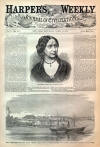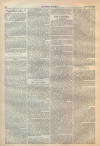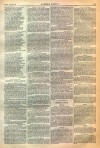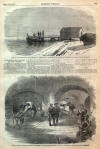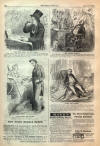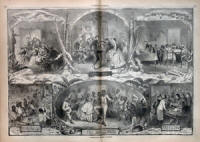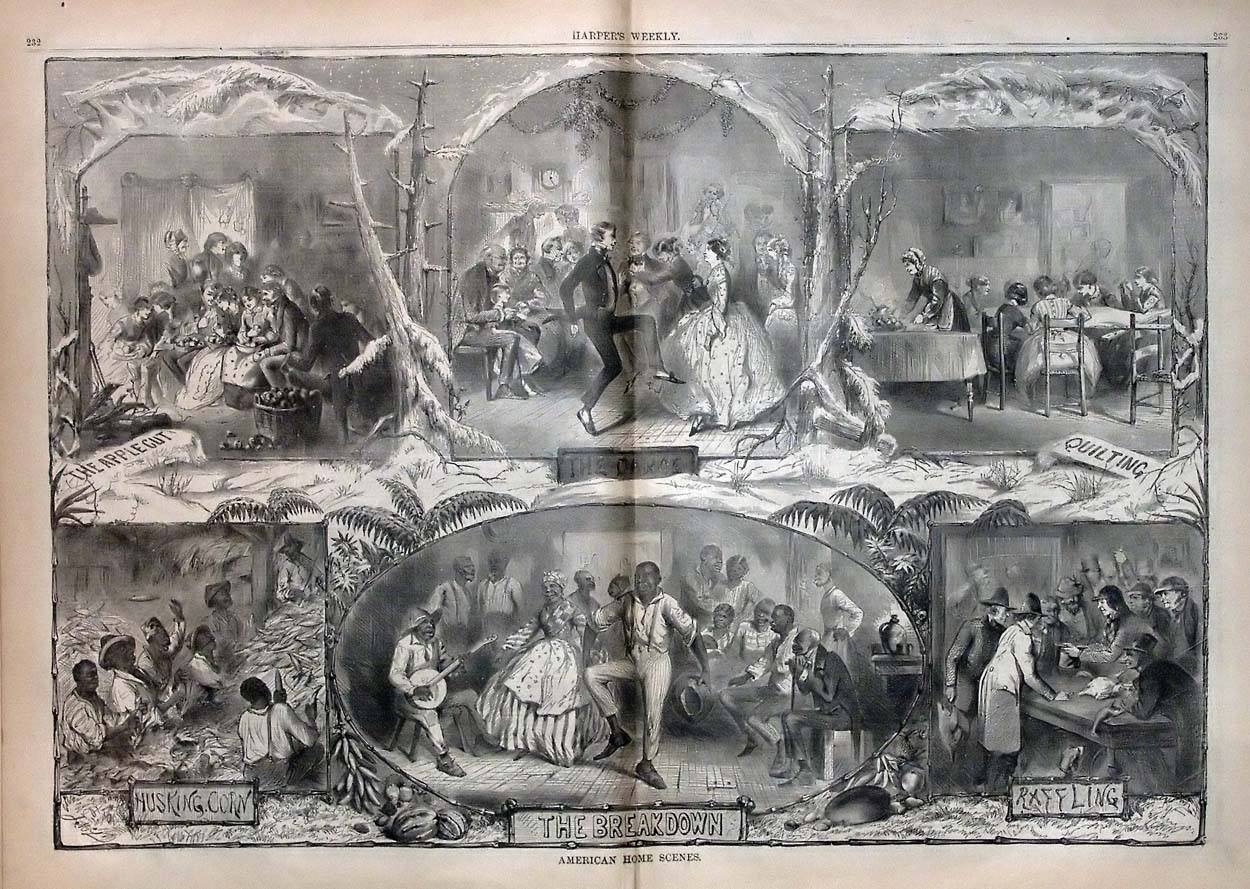Slave Family Traditions:
This leaf is an 1861 illustration by
Thomas Nast, one of the most noted artists of the 1800's. Nast is
credited with creating the popular image of Santa Clause, he created the
original democratic donkey image, and the original republican elephant
image. While famous for those images that have become part of our
popular culture, none of his work could be as touching, captivating or
collectible as this particular piece. Remember, the piece was created at
a time when slavery was still practiced, and considered acceptable by
many in this country. In this particular illustration, Nast introduces
what would have been a revolutionary concept . . . that people are all
basically the same, as reflected by their family customs and traditions.
He drives home this point by showing traditional family activities of
White's on the top, and corresponding activities of Black or Slave
families on the bottom. For example, the upper left inset image shows a
white family celebrating an "apple cutting", which was a tradition of
whites at the time to come together to store the apple harvest for the
winter. Under it is an image of a slave family celebrating a "Corn
Husking". An old black man is shown playing the fiddle as his friends
and family shuck corn. "Corn Huskings" were times when slaves from
surrounding plantations would come together to celebrate bringing in the
corn crop. It was a time of celebration, festivity, renewing old
acquaintances, and making new ones. (please email me if you would like
resources or references on this Slave tradition. I would be happy to
provide at no cost to anyone interested)
Similarly, the illustration shows a comparison between the White
tradition of having "dances", and the Slave tradition of having
"Breakdowns".
In this historically important leaf, Nast was making what would have
been an explosive point for his time . . . that we are all basically the
same. It was a revolutionary and controversial point at the time, but a
belief whose time had come, and one that helped serve as the beginning
of the end of slavery in this country. |
